|
|

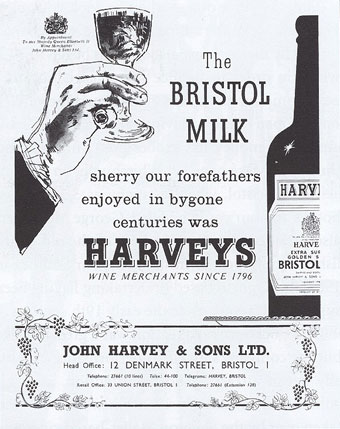
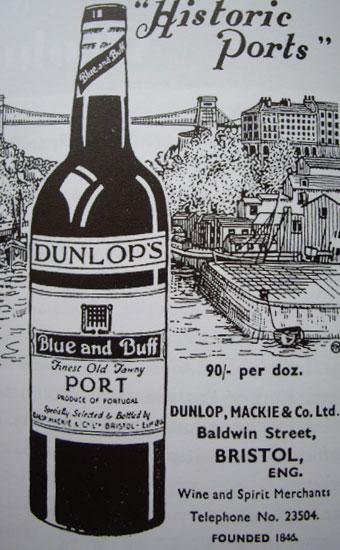
Advertising material for Bristol wine merchants.
Bristol was an importer of wines from around
1180. Its earliest links were with the Gascony region of south-west
France which had become an English territory in 1154 when Henry
II was crowned king.
When Gascony was reclaimed by the French in 1453, Bristol transferred
its business interests to Spain and Portugal. By the mid-seventeenth
century Bristol was the centre of distribution in Britain for sherry,
referred to as Bristol Milk. The main Bristol wine merchants included
Avery's (founded 1793), John Harvey & Sons Ltd (1796) and Dunlop,
Mackie & Company (1846), all of which survived into the twentieth
century. Harvey's registered the name Bristol Cream as a trademark
in 1882. Bristol's glass industry developed in part because of the
demand for bottles from the vintners. Glass was also needed for the
mineral water bottled at the springs of Hotwells.
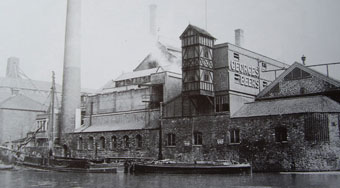
View of Georges' brewery in 1920s.
Bristol was also home to a number of breweries, the biggest of which
was Georges whose origins lay in the Old Porter Brewery of the early
eighteenth century. Philip George had been a partner in the consortium
that bought the Porter Brewery in Bath Street in 1788. The group
also bought a malt house in Tucker Street. George retired in 1816
and the company passed to his sons and their partners, becoming Georges & Company
in 1861. By 1888, in addition to the brewery, the company owned around
70 retail outlets for its beer and had absorbed a number of smaller
rival companies. By the Second World War its only local competitor
was Bristol United Breweries which it bought up in 1956, making it
the biggest brewery in the South West. Its independence came to an
end when it was in turn absorbed into Courage, Barclays and Simonds
Ltd. The brewery closed in 1999 and part of its old riverside site
has been converted into apartments.
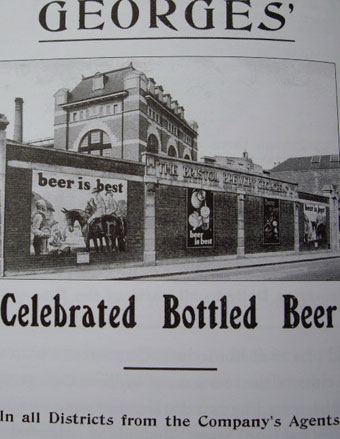
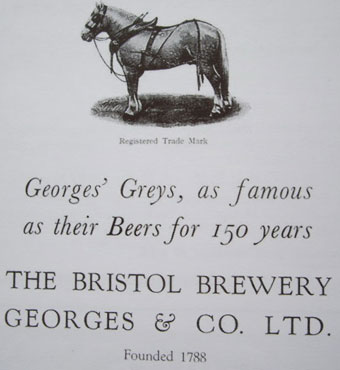
Advertising material for Georges'.
Local breweries operating in Bristol today include Bath Ales, Butcombe Brewery Ltd, Zero Degrees, Arbor Ales and The Beer Factory. See the Campaign for Real Ale website for details.
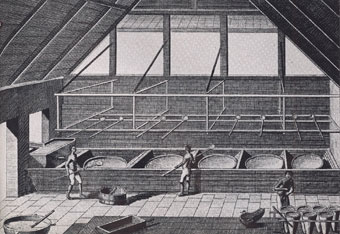
Boiling sugar, c 1750. Note the moulds in the foreground of this picture for shaping the sugar loafs.
Bristol's first sugar-refinery started operating in 1653 at the Great House, now the site of Colston Hall. Raw sugar arrived at the docks from the Caribbean islands of Nevis, Montserrat and Barbados when it had been cultivated on plantations worked by enslaved people. By the mid-eighteenth century there were about 20 sugar refineries in Bristol.
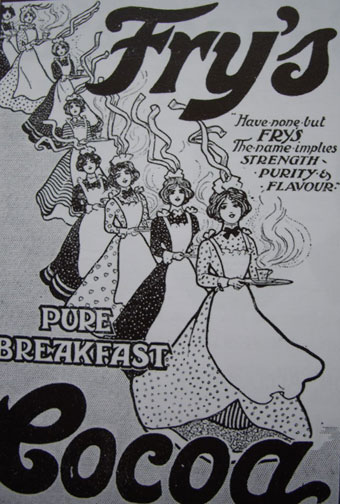

Fry's advertising material.
Another Bristol product dependent on raw materials from the Caribbean
colonies was chocolate. In 1731, William Churchman, a Bristol apothecary,
took out a British patent for making chocolate using water-powered
machinery. On his death in 1761, Churchman's premises and patent
were taken over by another local apothecary, the Quaker Joseph Fry
(1728-1787), and he and his descendants developed this into a major
industry, employing thousands of local people. It was Joseph's son
Joseph Storrs Fry (1769-1835) who embarked upon a policy of expansion
and increasing mechanisation after taking over the firm from his
mother, Anna (1732-1803), who had run the business after her husband's
death. By the 1820s, Fry's was using nearly 40 per cent of all the
cocoa imported into Britain in its products. The company introduced
eating – as opposed to drinking – chocolate to Britain
in 1847. Between 1835 and the end of the nineteenth century, the
number of employees at Fry's had risen from 16 to 4,500 and the complex
at Pithay in the city centre comprised eight factory buildings. The
company merged with Cadburys in 1917 and in 1935 completed its move
from the city centre to new premises at Somerdale in Keynsham. You
can read the BBC's announcement of the closure of the Keynsham works
here.

Aerial view of Fry's chocolate factory complex in the centre of Bristol in the early 1920s.
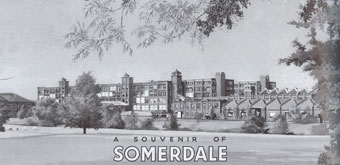
The Somerdale site.
Another major chocolate company in Bristol was that of H J Packer, based at Greenbank, which later became Elizabeth Shaw Ltd. Its subsidiary Charles Bond Ltd specialised in more high class chocolate products.
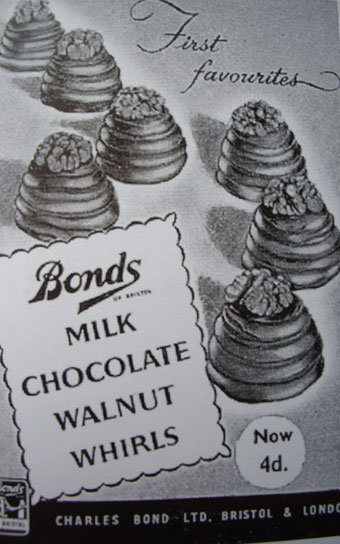
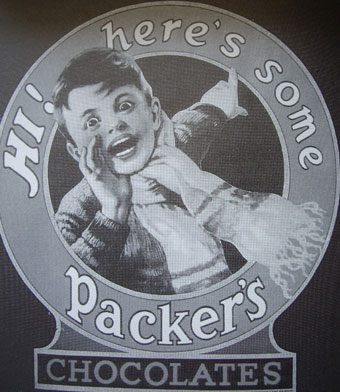
Advertising material for Packer's.
|
|
|
|